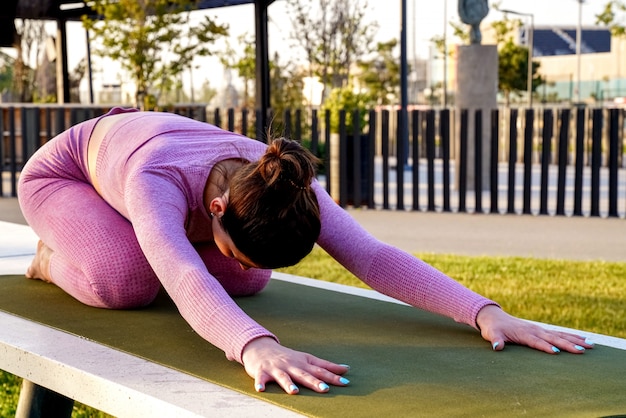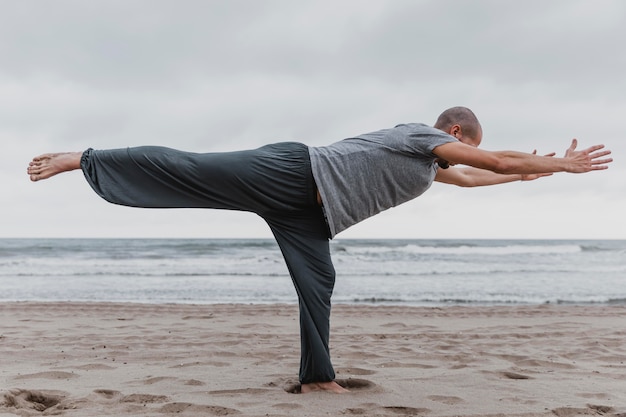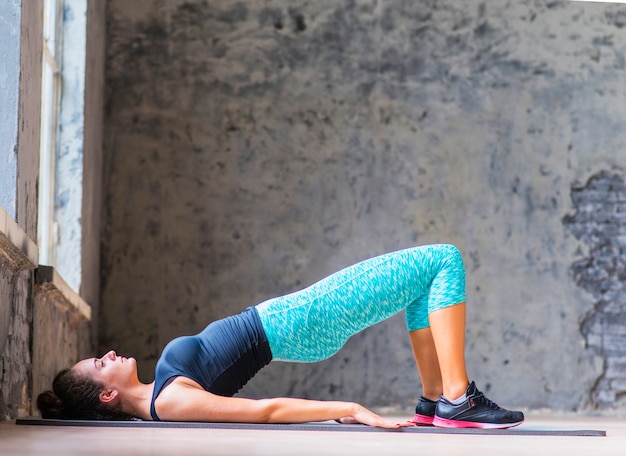No-Equipment Intermittent Fasting & Flexibility: A 60-Minute Beginner Routine with Coach Tips
Intermittent fasting has gained popularity for its simplicity and science-backed benefits, from improved metabolic health to enhanced mental clarity. But what if you could combine it with movement—specifically, a beginner-friendly, no-equipment routine that supports flexibility, mobility, and sustainable energy?
This 60-minute session is designed for those just starting out. It pairs the principles of intermittent fasting with mindful movement to support circulation, joint health, and overall well-being—without requiring any gym gear or prior experience.
Why Combine Intermittent Fasting with Movement?
During fasting windows, your body shifts from using glucose to burning stored fat for energy. Light to moderate movement can enhance this process while improving insulin sensitivity and reducing inflammation. For beginners, low-impact flexibility and mobility work are ideal—especially when done in a fasted state.
This routine is structured to support your body’s natural rhythms. It begins with gentle activation, progresses into mobility and balance, and ends with deep stretching and breathwork—perfect for early morning or late afternoon sessions.
The 60-Minute No-Equipment Routine
Perform this routine during your fasting window, ideally after staying hydrated with water or herbal tea. Wear comfortable clothing and find a quiet space with enough room to move freely.
1. Warm-Up & Breath Awareness (10 Minutes)
- Deep Belly Breathing (3 min): Sit or lie down. Inhale deeply through the nose for 4 counts, expand the belly, exhale slowly for 6 counts. Repeat to activate the parasympathetic nervous system.
- Neck Rolls (2 min): Gently roll your head in slow circles. Keep movements small and controlled to avoid strain.
- Shoulder Rolls & Arm Circles (3 min): Roll shoulders forward and backward. Follow with small arm circles, gradually increasing range.
- Ankle & Wrist Mobilization (2 min): Rotate wrists and ankles to improve joint lubrication and circulation.

2. Gentle Mobility Flow (15 Minutes)
Move slowly through these transitions. Focus on form, not speed.
- Seated Spinal Twists (3 min): Sit with legs extended. Bend one knee, place foot outside opposite thigh, and twist gently. Hold 30 seconds per side.
- Cat-Cow Stretch (4 min): On hands and knees. Inhale into cow (arch back, lift head), exhale into cat (round spine, tuck chin). Sync breath with movement.
- Child’s Pose to Tabletop (4 min): Flow between resting child’s pose and neutral tabletop. Emphasize smooth transitions.
- Leg Swings (4 min): Hold a wall or chair for balance. Swing one leg forward and back, then side to side. 20 reps per leg.
3. Balance & Stability (10 Minutes)
Improves coordination and joint support—key for long-term mobility.
- Single-Leg Stands (3 min): Stand on one leg, hands at hips. Hold 30–45 seconds. Switch sides. Use a wall if needed.
- Heel-to-Toe Walk (4 min): Walk in a straight line, placing heel directly in front of toes. Engages core and improves proprioception.
- Standing Side Bends (3 min): Feet hip-width apart. Gently reach one arm overhead, leaning to the side. Switch after 1 minute.

4. Flexibility & Deep Stretching (20 Minutes)
Hold each stretch for 45–60 seconds. Breathe deeply and avoid forcing the body.
- Seated Forward Fold (hamstrings): Sit with legs straight. Hinge at hips, reach toward toes.
- Butterfly Stretch (inner thighs): Soles of feet together, knees out. Gently press knees down.
- Lying Figure-Four (glutes): Lie on back, cross one ankle over opposite knee, pull thigh in.
- Supine Spinal Twist (lower back): Lie on back, drop both knees to one side, arms out.
- Chest Opener (shoulders & chest): Lie on back, arms in a 'T', palms up. Let gravity open the chest.
5. Cool Down & Mindful Breathing (5 Minutes)
Return to a seated or lying position. Practice diaphragmatic breathing for 5 minutes. Focus on releasing tension with each exhale.
Coach-Style Pointers & Form Notes
- Move with intention: Quality over quantity. Even small movements matter.
- Stay hydrated: Sip water before and after—especially important during fasting.
- Modify as needed: Use cushions under knees, a chair for balance, or reduce hold times.
- Listen to your body: Discomfort is normal; sharp pain is not. Stop if anything feels wrong.
- Consistency beats intensity: Doing this 3–4 times a week is more effective than pushing hard once.
Easy Modifications for All Levels
- For limited mobility: Perform seated versions of stretches and balance exercises.
- For tight schedules: Break the routine into 2x 30-minute sessions (e.g., mobility in the morning, stretching at night).
- For added challenge: Increase stretch duration or add slow pulses in holds.
- For joint sensitivity: Place a folded towel under knees during floor work.
Final Thoughts
This no-equipment, 60-minute flexibility routine complements intermittent fasting by supporting circulation, reducing stiffness, and promoting mindfulness. It’s accessible, safe, and sustainable—perfect for beginners looking to build healthy habits without pressure or complexity.
Start slow, honor your body’s signals, and celebrate small progress. Over time, you’ll notice improved ease of movement, better posture, and a calmer mind—simple wins that add up.

















